43 the class or division hazard labels indicate
PDF Subsidiary Hazard Labels Table - jjktrainingportal.com Each package containing a hazmat shall be labeled with a primary hazard label (and subsidiary hazard label, if applicable,) based on the information found in column 6 of the hazmat table. If the package is not already labeled (and is not a Class 1 or Class 2 material,) it should be labeled with a subsidiary hazard label according to the table below. Subsidiary hazard level (packing group) Subsidiary Hazard (Class or Division) Hazard Classes and U.N. Markings » Hazmatpac The International Maritime Organization (IMO) classifies dangerous goods into nine hazard classes. Diamond labels denote the hazards involved by means of colors and symbols. C. Some hazard classes are further subdivided into hazard divisions due to their wide scopes. There are nine (9) hazard classes. Their order does not indicate degree of danger.
Un Classification of Hazardous Chemicals/Dangerous Goods. Division 6.2 Infectious substances. CLASS 7 : Radioactive substance. CLASS 8 : Corrosives. CLASS 9 : Miscellaneous dangerous substance. See IS:1446 for classification of dangerous goods. Arrangement for loading and unloading of the liquid have to be well designed. It is preferred to load toxic and flammable material from the bottom.
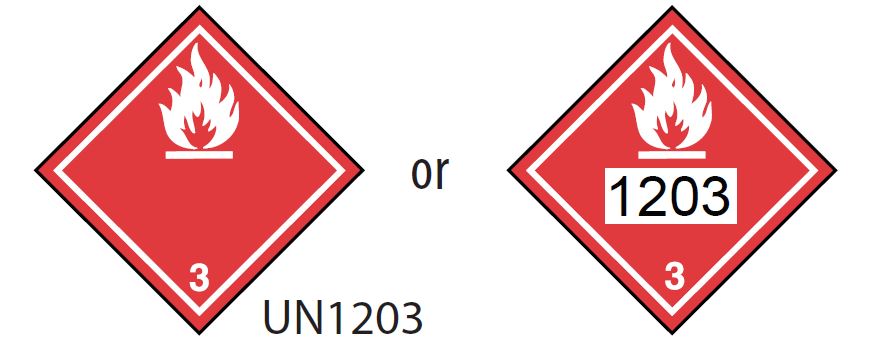
The class or division hazard labels indicate
The Nine Classes of Hazardous Materials - Hazsim Division 1.5 - Very insensitive explosives with a mass explosion hazard. Division 1.6 - Extremely insensitive articles which do not have a mass explosion hazard. Class 2: Gases. This class is also broken into multiple divisions. However, only 3 are used to divide this class. One of the most common mistakes people make when considering this class is that it covers all "flammable" gases. This is not true, this class also covers our non-flammable gases and those in which that are deemed ... PDF Chemical Hazard Classification and Labeling: Comparison of OPP ... - US EPA Except as detailed in the specific hazard class comparisons in the following sections of this paper, other existing OPP label information requirements appear consistent with ... Since the principal purpose of this document is to indicate label changes that would be necessary to conform to the GHS, classification criteria are presented in ... PDF DOT CHART 16 Hazardous Materials Markings,Labeling and Placarding Guide • The appropriate hazard class or division number must be displayed in the lower corner of a primary and subsidiary hazard label [§172.402(b)]. • For classes 1,2,3,4,5,6, and 8, text indicating a hazard (e.g., "CORROSIVE") is NOT required on a primary or subsidiary label. The label must otherwise conform to Subpart E of Part 172 [§172.405].
The class or division hazard labels indicate. GHS Safety Data Sheets Explained: Section 14 - iacs They will either be called classes, division or a mix of the two. Also, products being transported can present more than one hazard (e.g. explosive (class 1) and flammable (class 3)). As such, each will be assigned as the primary (whichever hazard is identified as the most hazardous) or secondary risk (which will be given - in brackets - after the primary risk class (e.g. 1(3))). Dangerous goods classes and hazard labels - Civil Aviation Safety Authority Below are the 9 hazard labels for the 9 classes of dangerous goods. Class 1 Explosives Class 1 explosives This includes items such as: explosive substances pyrotechnic devices ammunition fireworks detonators. Class 2 Gases Class 2 gases These can be transported as compressed, liquefied, refrigerated liquefied or gas in solution. Classification of a Material Having More Than one Hazard - 49 CFR 173 ... 49 CFR 173.2 indicates the hazardous material classes and divisions determined by PHMSA for the classification of a hazardous material; they are: Class 1 Explosives Division 1.1 Explosives with a mass explosion hazard Division 1.2 Explosives with a projection hazard Division 1.3 Explosives with predominately a fire hazard Hazmat Labels and Marking for Shipments: What You Need ... - News and Info The hazard class number of the material being transported must be displayed at the bottom corner of each placard. Each placard must be diamond shaped and must measure at least 9.84 inches (250 mm) on each side. The text and numbers included in the placard - the hazard class number in particular - must measure at least 1.6 inches (41 mm).
Class 4 Dangerous Goods Flammable Solids etc - ChemSafetyPro.COM The picture below shows hazard symbols for Class 4 dangerous goods. More info about the marking and labelling of dangerous goods can be found here. More Dangerous Goods Classes Class 1 Explosives Class 2 Gases Class 3 Flammable Liquids Understanding HAZMAT Placards | ArcBest Numbers 1-9 represent the different hazardous classes and their divisions (class numbers are located at the bottom of the sign and division numbers are in the middle): Class 1 — Explosives. 1.1: Products with the potential to create a mass explosion. 1.2: Products with the potential to create a projectile hazard. What Do the Different Hazardous Signs Mean? - Hazmat School Specifically, a liquid is considered flammable if it has a flash point at or under 199.4 °F. Class 4 signs also include the flame symbol with three different divisions. The red and white striped sign indicates a flammable solid. The half white, half red sign indicates that a material could spontaneously combust. WHMIS 2015 - Hazard Classes and Categories : OSH Answers This class is meant to cover any physical hazards that are not covered in any other physical hazard class. These hazards must have the characteristic of occurring by chemical reaction and result in the serious injury or death of a person at the time the reaction occurs.If a product is classified in this class, the hazard statement on the label and SDS will describe the nature of the hazard.
Dg & Safety Class or Division (Subsidiary Hazard) - Contains the class or division number assigned to the article or substance. Where the substance has a subsidiary hazard(s) the class or division number is shown in parentheses following the primary hazard. Column D Labels - Indicates the labels that must be appear on the dangerous goods package. Column E GHS hazard pictograms - Wikipedia Hazard pictograms form part of the international Globally Harmonized System of Classification and Labelling of Chemicals (GHS). Two sets of pictograms are included within the GHS: one for the labelling of containers and for workplace hazard warnings, and a second for use during the transport of dangerous goods. Either one or the other is chosen, depending on the target audience, but the two ... Dangerous Goods Classes and Symbols - chemsafetypro.com Substances (including substances and mixtures), and articles are assigned to one of the following 9 classes according to the most predominant hazards they pose in transport. Some of the classes can be further divided into divisions, e.g., Class 1, while others do not have sub-divisions, e.g., Class 3. Class 1 Explosives Class 2 Gases PDF Part 2 Classification - Unece 2.0.1 Classes, divisions, packing groups 2.0.1.1 Definitions Substances (including mixtures and solutions) and articles subject to these Regulations are assigned to one of nine classes according to the hazard or the most predominant of the h azards they present. Some of these classes are subdivided into divisions. These classes and divisions are:
Hazmat Labels, Hazmat Placards, and Hazmat Markings - Labelmaster The Department of Transportation has defined 9 Hazard Class Groups. They are separated by distinct hazardous properties and shipping requirements. Hazard Class 1 - Explosives; Hazard Class 2 - Gases; Hazard Class 3 - Flammable and Combustible Liquids; Hazard Class 4 - Flammable Solids; Hazard Class 5 - Oxidizing Substances, Organic Peroxide
GHS Hazard Classification: Everything You Need to Know - ERA Environmental Hazard Class. Associated Hazard Category . Acute toxicity. Categories 1-4 (with 1 being the most dangerous) Skin corrosion. Categories 1A, 1B, 1C, and 2. Skin irritation. Categories 1A, 1B, 1C, and 2. Eye Effects. Categories 1, 2A, and 2B. Sensitization (Skin or Eye) Category 1A and 1B. Germ cell mutagenicity. Categories 1A, 1B, and 2. Carcinogenicity
DOT Hazard Classes | Hazmat University - News and Info This hazard class is further broken down into three divisions: 2.1 Flammable gas (e.g. spray paint and lighters) 2.2 Non-flammable compressed gas (e.g. oxygen generators and shock absorbers) 2.3 Poisonous gas (e.g. Chlorine Gas and Phosgene Gas) Hazard Class 3 - Flammable Liquids Examples of common flammable liquids include perfumes and paint
Hazardous Materials Tables | High Road Online CDL Training - TruckingTruth Column 1. (+) Fixes the proper shipping name, hazard class and packing group to use, even if the material does not meet the hazard class definition. (A) Means the hazardous material described in Column 2 is subject to the HMR only when offered or intended for transport by air unless it is a hazardous substance or hazardous waste. (W) Means the ...
49 CFR § 172.402 - Additional labeling requirements. In addition to the label specified in column 6 of the § 172.101 table, each package of Class 1 material that also meets the definition for: (1) Division 6.1, Packing Groups I or II, shall be labeled POISON or POISON INHALATION HAZARD, as appropriate. (2) Class 7, shall be labeled in accordance with § 172.403 of this subpart.
Transportation of Dangerous Goods (TDG) - 9 Classes These criteria are outlined in the TDG Regulations. Assigning a substance into a hazard class is usually done by the consignor. The person deciding the classification must be competent, meaning they have the education, training, and experience required for the task. Some substances have been assigned classes in the TDG Regulations.
DOT Hazard Classes - International Association of Fire Chiefs The hazard class of dangerous goods/commodities is indicated either by its class (or division) number or name. Placards are used to identify the class or division of a material. The hazard class or division number must be displayed in the lower corner of a placard and is required for both primary and subsidiary hazard classes and divisions, if applicable.
Labeling | UPS - United States The first label name displayed represents the "primary" hazard class. Additional label names are the "subsidiary risks" or "subrisks" for that material. All subrisk labels are to be displayed on the same side of the package as the primary label and the associated marking.
Know Your Hazard Symbols (Pictograms) - Princeton University The GHS system, part of OSHA's Hazard Communication Standard (HCS), consists of nine symbols, or pictograms, providing recognition of the hazards associated with certain substances. Use of eight of the nine are mandatory in the U.S., the exception being the environmental pictogram (see below). Each pictogram covers a specific type of hazard and ...
Classes 1-9 of dangerous goods explained Class 1 Explosive substances and articles Class 1 contains substances and articles which pose a hazard due to explosion. Items in Class 1 are further divided into divisions 1.1 - 1.6 depending on the nature of the explosion hazard and the sensitivity of the item. A compatibility group, consisting of a single letter, is also assigned to each item.
PDF DOT CHART 16 Hazardous Materials Markings,Labeling and Placarding Guide • The appropriate hazard class or division number must be displayed in the lower corner of a primary and subsidiary hazard label [§172.402(b)]. • For classes 1,2,3,4,5,6, and 8, text indicating a hazard (e.g., "CORROSIVE") is NOT required on a primary or subsidiary label. The label must otherwise conform to Subpart E of Part 172 [§172.405].
PDF Chemical Hazard Classification and Labeling: Comparison of OPP ... - US EPA Except as detailed in the specific hazard class comparisons in the following sections of this paper, other existing OPP label information requirements appear consistent with ... Since the principal purpose of this document is to indicate label changes that would be necessary to conform to the GHS, classification criteria are presented in ...
The Nine Classes of Hazardous Materials - Hazsim Division 1.5 - Very insensitive explosives with a mass explosion hazard. Division 1.6 - Extremely insensitive articles which do not have a mass explosion hazard. Class 2: Gases. This class is also broken into multiple divisions. However, only 3 are used to divide this class. One of the most common mistakes people make when considering this class is that it covers all "flammable" gases. This is not true, this class also covers our non-flammable gases and those in which that are deemed ...
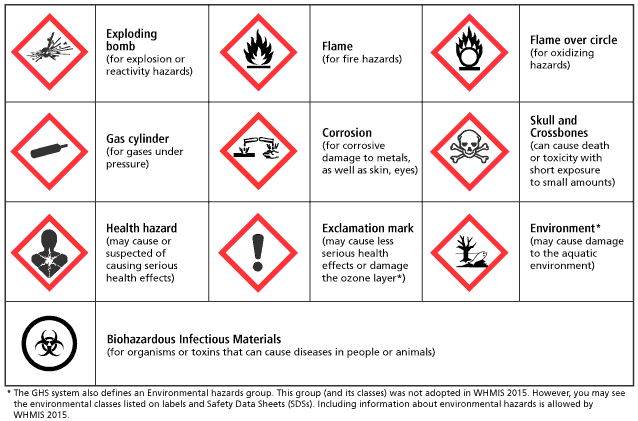
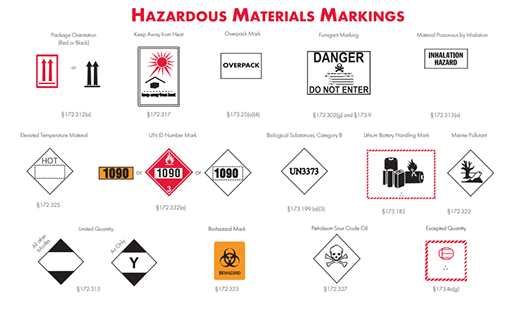

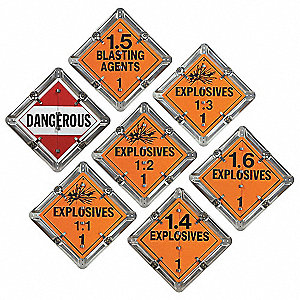
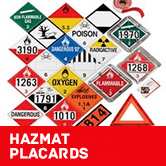
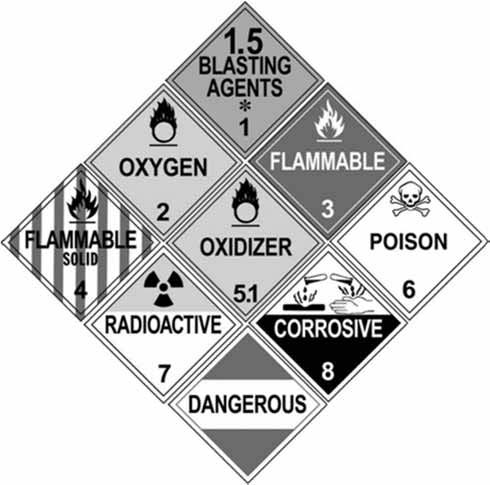


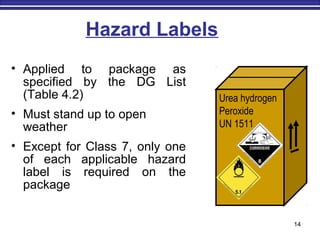


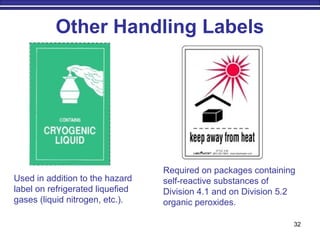






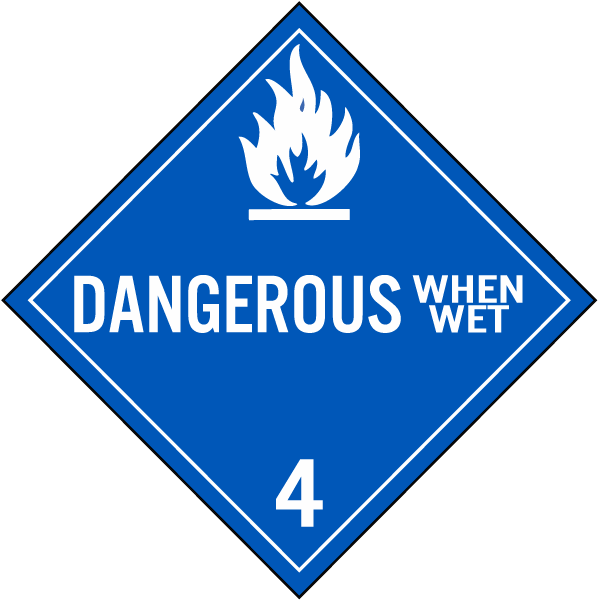

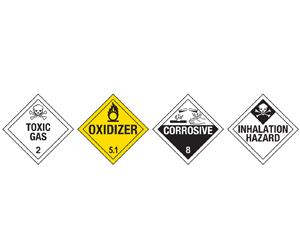
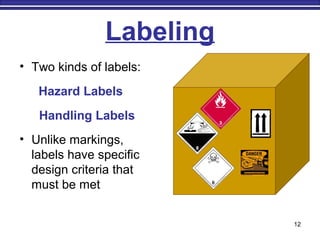


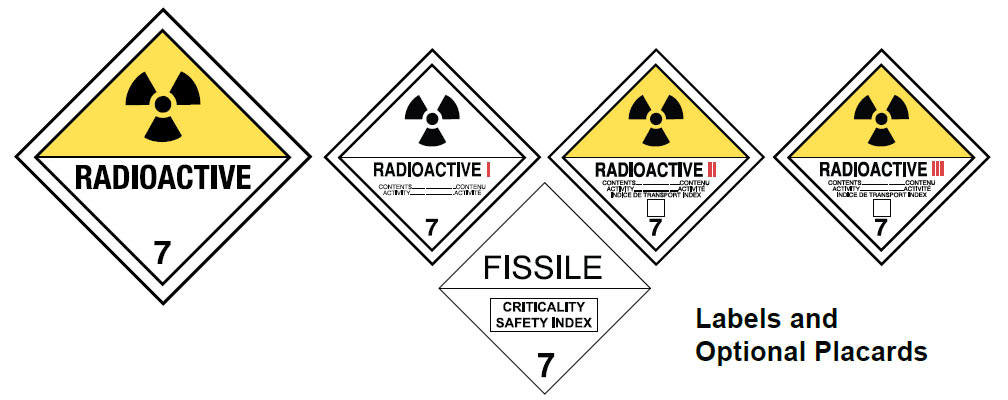
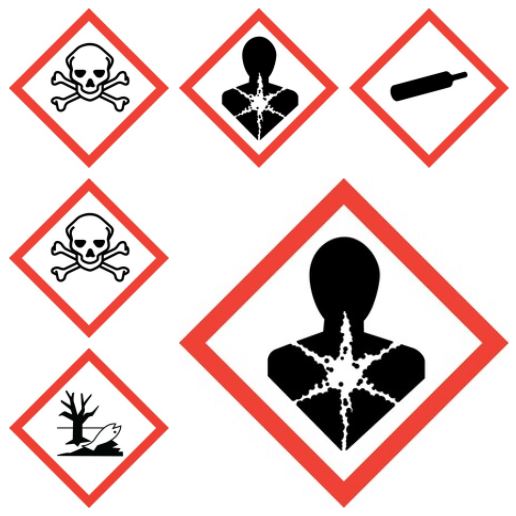

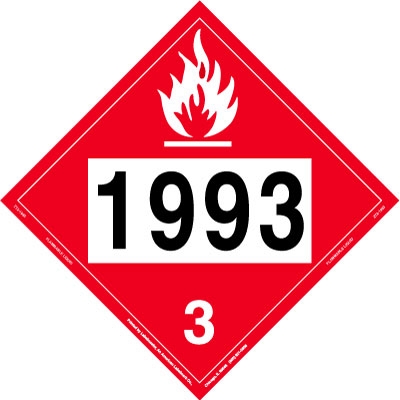


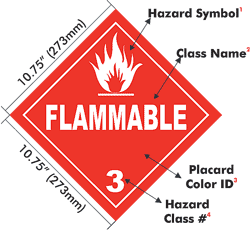


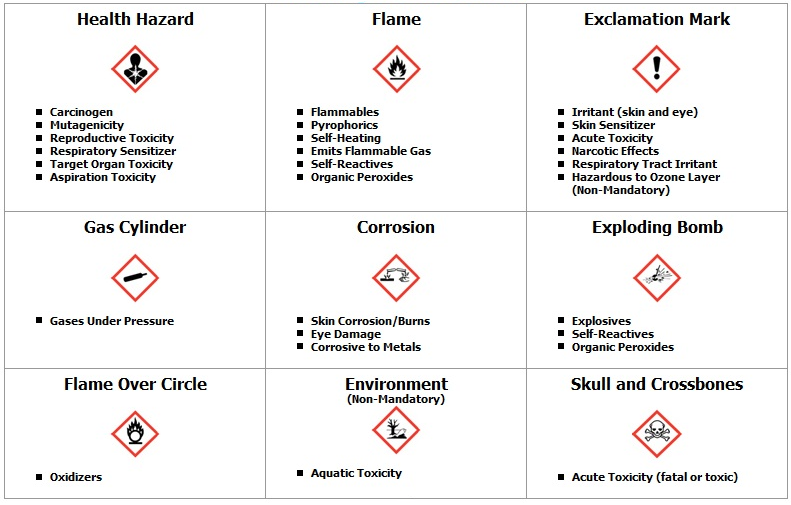


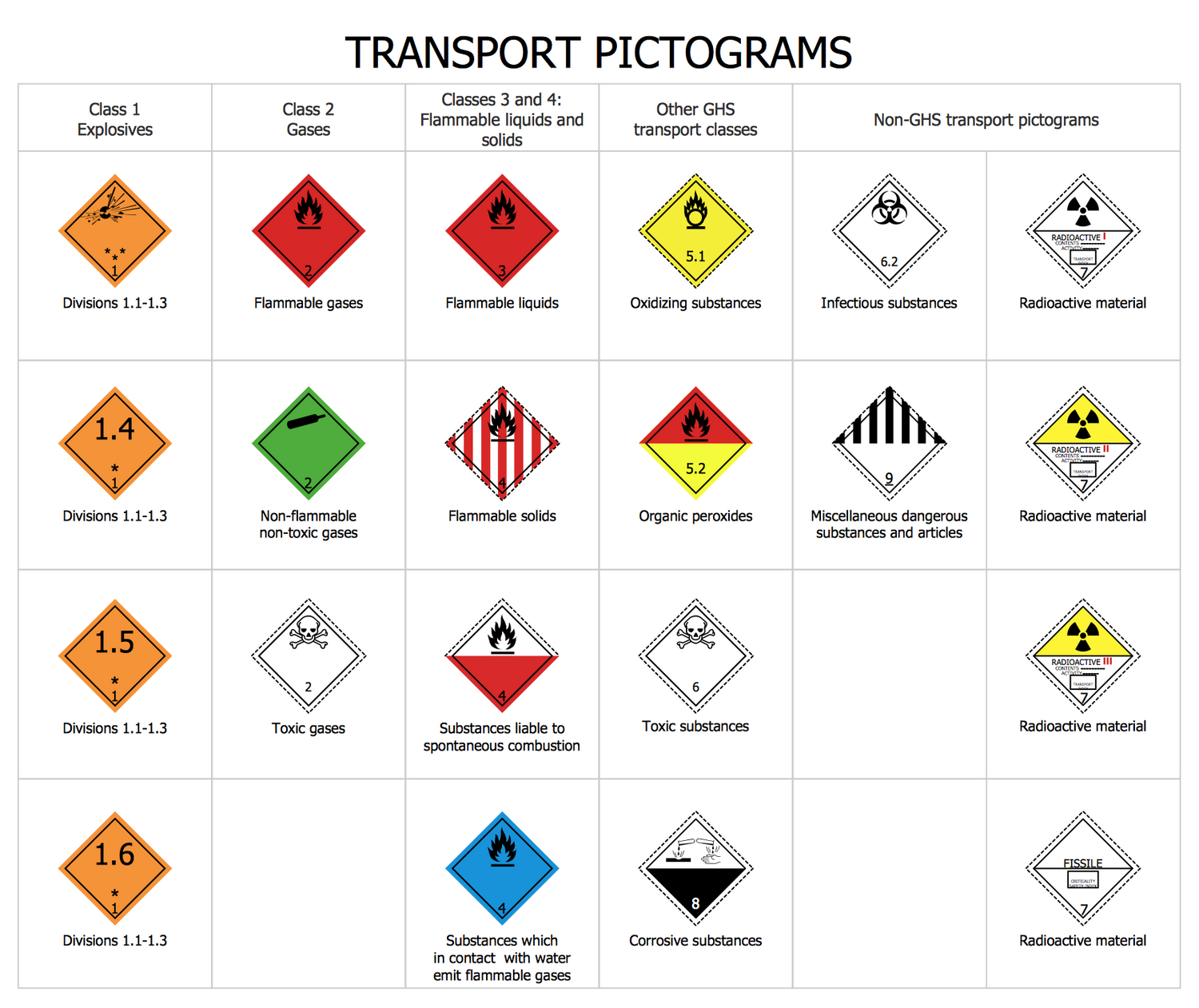
Post a Comment for "43 the class or division hazard labels indicate"